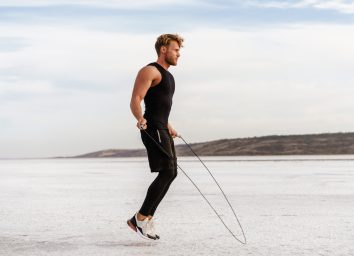What Weighted Jump Roping Does to Your Body Makes It Such a Great Workout
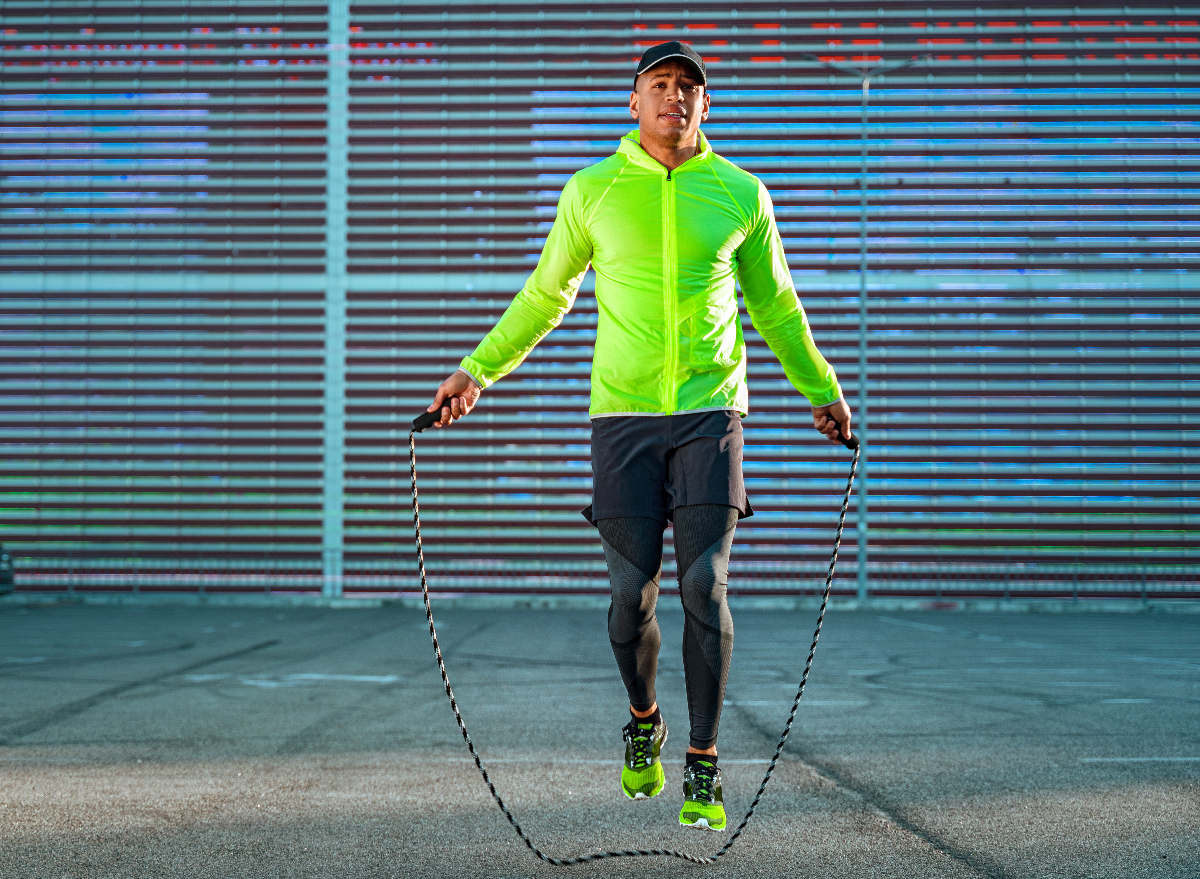
Weighted jump roping is a hot trend in the fitness world right now—and for good reason. There are countless ways it does right by your body. But let’s take a step back to answer all your biggest questions: What exactly is a weighted jump rope? Why would I want to use one instead of a run-of-the-mill rope? And lastly: Where can I buy one and how much should it weigh?
To tell you all you need to know, we enlisted the help of Rachel Jablow, NASM, CPT, founder of Get Roped™️ with Rachel, a jump rope fitness company. According to Jablow, weighted ropes, which range from ¼ to 2 pounds, are just like regular jump ropes, but with one big difference: They either have weighted handles or a weighted rope, depending on the brand and model. (She prefers the latter.)
“While it may not sound like a lot of weight, it’s amazing how heavy it becomes after just a few rotations if you’re not used to it,” says Jablow, a fan of CrossRope’s weighted options. “CrossRopes have handles that allow interchangeable ropes of different weights. The weight is in the rope itself, not the handles, so it’s evenly distributed.” Beginners should start with a ¼ pound rope, and then slowly work up for an added challenge, she explains.
As for why someone would want to go with a weighted rope versus a classic one, Jablow says there are a few reasons. First, they’re actually great for beginners. While it may sound counterintuitive, the added weight actually gives the jumper more control over the rope. This is helpful when it comes to perfecting cadence and control. It can also be helpful while learning fancy footwork, like double-unders, Jablow explains. In addition, the added resistance means your cardiovascular system and muscles need to work harder—and along with that comes a host of health benefits.
Read on to learn all about what weighted jump roping can do to your body, and then pick up a rope so you can jump right into this new fitness craze ASAP. Next up, be sure to check out The 6 Best Exercises for Strong and Toned Arms in 2022, Trainer Says.
You’ll relieve stress and anxiety
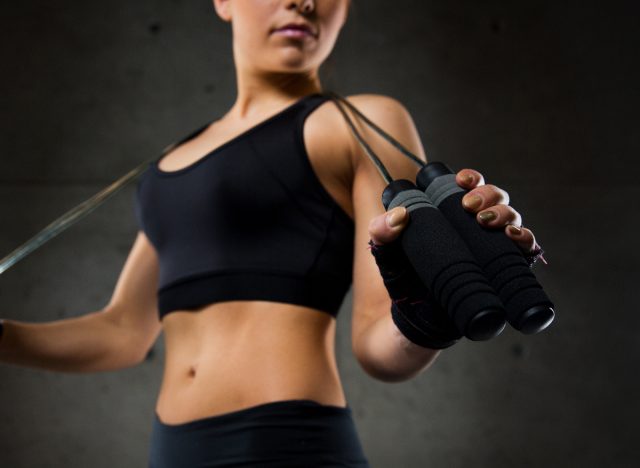
Aerobic exercise—like weighted jump-roping—helps decrease how much adrenaline and cortisol (aka stress hormones) are in your body, helping to ward off stress and anxiety. Jablow finds this to be true from first-hand experience, calling the sport her “moving meditation.”
She tells us, “It’s all about rhythm, and when you find good music, with a good steady beat, it’s very easy to lose track of time. It’s one of the few exercises where you must stay present in the moment, or you end up tripping. It’s hard to let your mind wander, which is really great at reducing stress.”
Related: Get Rid of a Pot Belly in Your 50s With This 10-Minute Workout, Trainer Says
You may improve your bone density
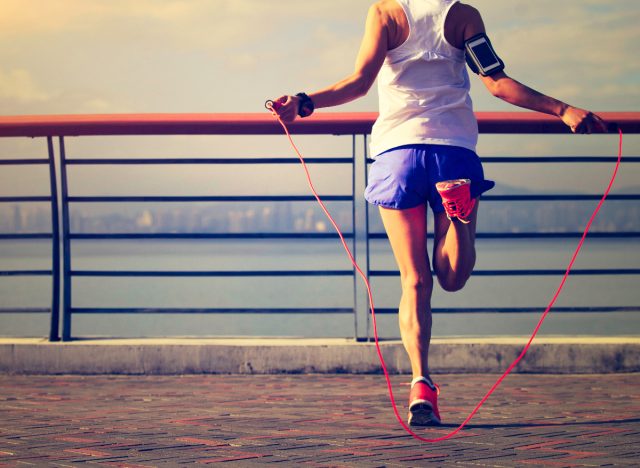
Drinking milk isn’t the only way to strengthen your bones and ward off fractures and osteoporosis. According to a study of Olympic swimmers, jump roping a couple of times a week improves bone density by “stressing” bones—in a good way. “The jumping creates a load-bearing impact on your bones which is one of the best ways to build bone strength,” Jablow explains.
Related: 3 Quick Ways To Burn Calories Without “Exercising,” Trainer Says
Your entire body will get stronger
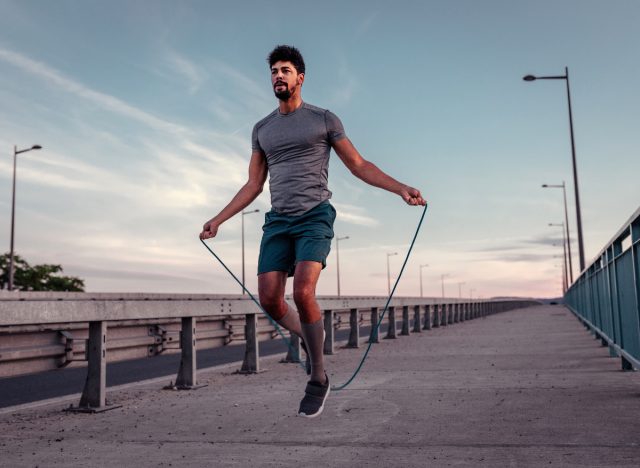
If you’re looking for an efficient full-body workout, weighted jump-roping is it. “With a basic unweighted rope, just 10 minutes of jumping is equivalent in calorie burn to 30 mins on a treadmill going at 7 mph. If you do the same 10 minutes with a weighted rope, you are not only burning additional calories but also strength training at the same time,” Jablow says.
By mixing up the direction you rotate the rope, you can hit all your major muscles. “When the rope is rotating forward, your core, shoulders, and biceps are all contracting. When rotating the rope in reverse, you are targeting the back, shoulders, and triceps. This is all in addition to the lower body engagement that happens with the jump—regardless of the rope’s rotational direction,” Jablow explains.
Not only will engaging all these muscles to help you look extra toned, but it will also make you stronger, too. In an Archives of Sports Medicine and Physiotherapy study of 25 volleyball players, researchers found that after 12-weeks of jumping with a weighted rope, the subjects gained “considerable power [and] muscular strength” in their upper and lower bodies.
You could burn some fat
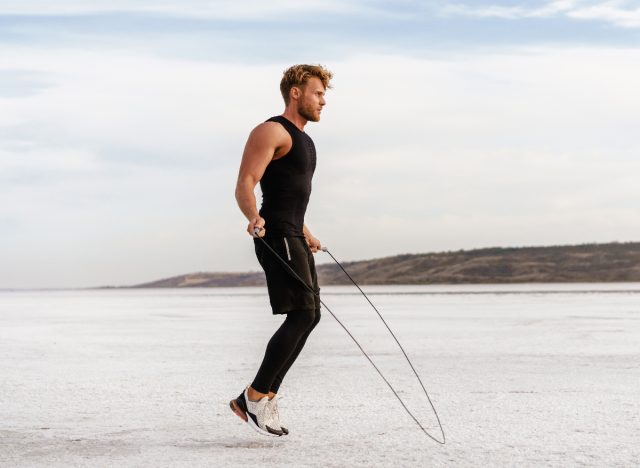
The Archives of Sports Medicine and Physiotherapy study also found that participants who used the weighted rope lost fat in their upper and lower body, as well as their midsection. This, according to Jablow, isn’t too surprising. “Jumping rope is a great way to burn calories and is extremely time-efficient. Just 10 minutes a day is all you need to see changes,” she says.
To work up to 10 minutes a day, intersperse 1 minute of jumping with two minutes of active recovery (like a boxer bounce), and repeat that circuit 3 to 4 times. From there, you can slowly work up to 30 minutes, which is where the fat-burning effects really kick in. “This type of workout allows you to stay at about 60 to 70% of your max heart rate, for an extended period, which essentially keeps you in the fat burn zone for longer,” Jablow explains.
Your heart will be challenged
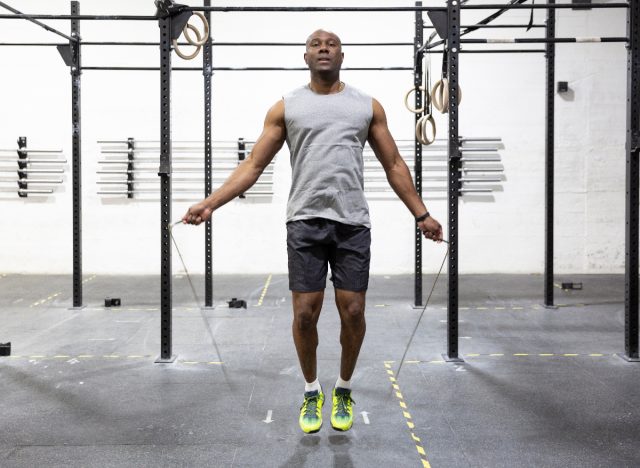
Back in 2013, a small study found that college men who spent 10 minutes jumping rope daily for six weeks improved their cardiovascular fitness just as much as college men who jogged for 30 minutes over the same time period. (Impressive, right?) And as you might have guessed, working to fling that extra weight around your body with a weighted rope means your cardiovascular system works even harder. “You challenge your cardiovascular health with any jump rope, but with a weighted rope, you are increasing the intensity and the benefits,” Jablow says.

